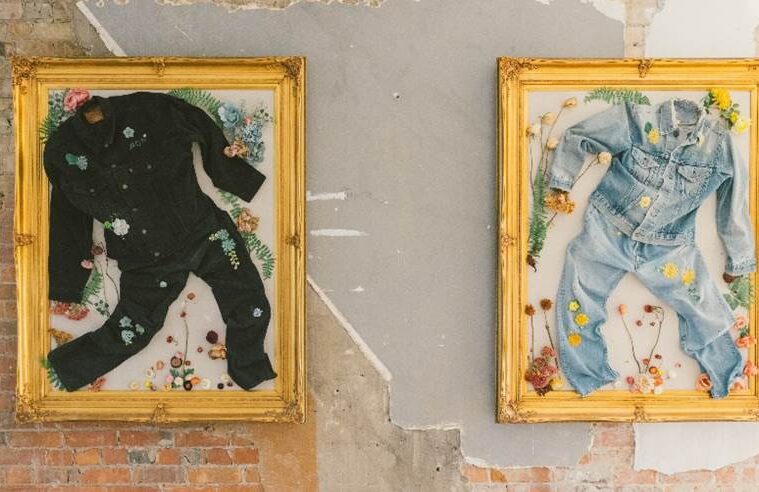If you’re a fan of Levi’s and a fan of vintage clothing and art, then you might just get super excited about the new collaboration between Levi’s and the Toronto-based brand Bentgablenits.
Levi’s is a well-known brand for their denim, especially for their 501 fit jeans and classic trucker jackets. From workwear to casual wear, to streetwear, Levi’s has been a major part of stylish celebrities, famous film costumes and just like you and me, our own closets. 
Bentgablenits is a Toronto-based brand that is named after the three founders Brenda Bent, Karen Gable, and Angelo Nitsopoulos. The brand came together as a way of creating designs in a ‘zero-waste’ way. BGN for short, re-invents popular pieces and adds sartorial details that bring them back to life, and that is exactly what they are doing with their collaboration with Levi’s.
Many fans of Levi’s know or own the two most popular pieces to ever be released from the brand, the classic Levi’s 501 jeans and the classic Levi’s Trucker jacket. With this collaboration, Bentgablenits has taken vintage 501 and trucker jackets and added their own unique and very artsy touch to each garment they create, which in fact is as unique and one-of-a-kind as ever.
Launching on December 15th through the Levi’s and Bentgablenits websites, you can source out very unique 501 and Trucker jackets that have found their way to the BGN team and have sartorial features like hand-dyed flowers to match each garment perfectly.
 The collaboration comes as a true collaboration, for Bentgablenits, they have been collecting vintage, hand-sewn fabrics and material for over 30 years, while Levi’s is providing BGN with vintage 501’s and Trucker jackets to make this mash-up a true work of art between the two brands, and make it as authentic as ever with a real vintage and no-waste platform.
The collaboration comes as a true collaboration, for Bentgablenits, they have been collecting vintage, hand-sewn fabrics and material for over 30 years, while Levi’s is providing BGN with vintage 501’s and Trucker jackets to make this mash-up a true work of art between the two brands, and make it as authentic as ever with a real vintage and no-waste platform.
“Everybody wants a 501,” says Brenda Bent about the collaboration. “Whether they’re on a girl or a guy, it always looks good. Levi’s has a legacy, and we appreciate using older things to give them another life. Partly because we like old stuff. But also, because it creates an interesting way of incorporating the future into the past.”
Article published by HOLR Magazine


